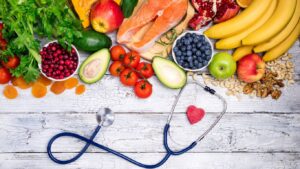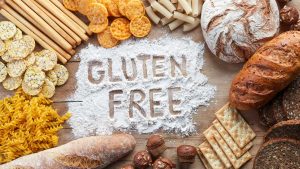What is fibre?
Fibre is the component of plant foods that remains undigested as it passes through
your body. You might be wondering then why we need it, since it’s not digested.
Dietary fibre helps keep our digestive system healthy and is very important for our
overall health and wellbeing. It is found in fruit and vegetables, grains, nuts, beans
and legumes. There are three different types, each with their own roles and health
benefits. To obtain these benefits, we should include all three types of fibre in our
diet:
- Insoluble Fibre
Adds bulk to your stools, helping to prevent constipation. Foods high
in insoluble fibre include fruit, vegetables, nuts and wheat bran - Soluble Fibre
Lowers your LDL (‘bad’) cholesterol levels and helps stabilise your
blood sugar levels. Soluble fibre can be found in oats, psyllium and d
and dried beans. This type of fibre slows down digestion, which helps
make you feel full. - Resistant Starch
Assists in the production of good bacteria in the large intestine and
improves bowel health. Potatoes, lentils, whole grains and unripe
bananas all contain resistant starch.
Easy ways to eat more FIBRE
Toss a can of legumes such as lentils, chickpeas or 4-bean mix into
soups, stews and curries to replace half the meat. This adds more
than 10g of fibre. Legumes are packed with nutrients, and are
inexpensive compared to beef, fish and chicken. Just remember to
always rinse the legumes before consuming.
Add some chopped nuts, chia seeds, LSA mix or pepitas over your
bowl of porridge, salad or yoghurt. 1 tablespoon will increase your
daily fibre intake by up to 4 grams.
Swap white bread, rice and pasta for whole meal or whole grain
varieties, and you will at least double your fibre intake. Microwavable
pouches of brown rice are a quick and easy option.
Checking the label for FIBRE
To compare the fibre contents of similar products check the ‘per
100g’ column and choose the brand with the highest amount.



